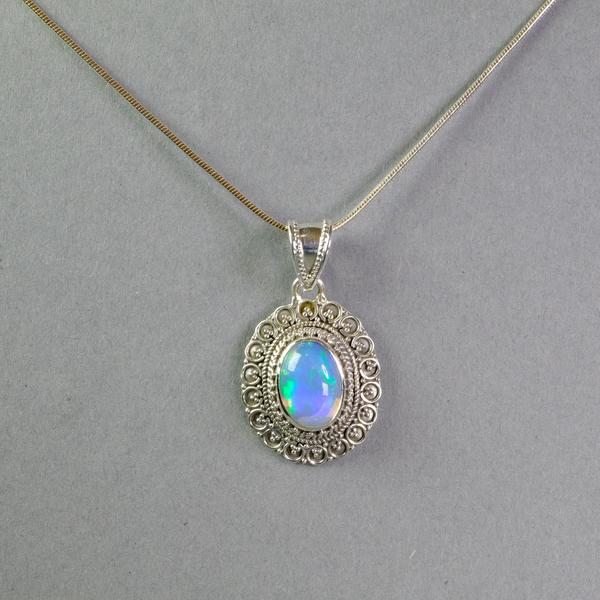
For many years opals have been considered a stone of bad luck. Where did this myth come from? Is it true?

*
I always believed that the basis for the myth came from the fact that an opal stone is fragile compared to a diamond and can be broken if treated roughly - either by a jeweller or the owner. It is said that Louis XI ordered his jeweller to have his hands cut off after he cracked a particularly precious opal whilst cutting it.
*

*
But if you look into the history of the stone there is so much more!
In Roman times, the gem was carried as a good luck charm and it was believed that the gem, like the rainbow, brought its owner good fortune. To the Romans, it was considered to be a token of hope and purity, whilst in Arabian folklore, it was said that the stone fell from heaven in flashes of lightning.
So what happened?
Medieval Europeans disliked opals as they considered them to be too like the eyes of evil animals - the fear of the evil eye still exists.
*

*
The opal became associated with the Black Plague due to a rumour that a victim was wearing an opal that went dull after she died. In another story, a Spanish king gave an opal to his wife, and she soon died. He then gave the ring to his grandmother, who also died, and the tragedy continued with his sister and his sister-in-law. Finally, he put the ring on his own finger and died. In reality, the family probably died of cholera. Hearing that story though, it is no wonder people thought the stone was the cause!
*

*
Our very own Queen Victoria helped the popularity of opals during her reign. She had a fabulous collection of opal jewellery which she wore throughout her years. She was known to have a great affection for the stone, but at the same time Diamond merchants were spreading rumours that the opal stone was bad luck. In the 1890's stunningly beautiful opals from Australian were appearing on the market and the merchants feared the competition to their trade.
*

*
You wouldn't believe one stone could produce such fear and love at the same time. It really must be special!
Many of the pieces of jewellery we sell have man made opal set in them. Some very clever people have found a way to produce opal the same way it is produced in nature with the same physical and chemical properties. It makes a more affordable option for a beautiful piece of jewellery.
We do have some stunning Ethiopian opal ( the last two pictures ), a fairly new source for the stone, which is proving very popular.
So, as they say, it's down to you! But I truly believe it is a gorgeous stone and should be bought and worn with joy.
